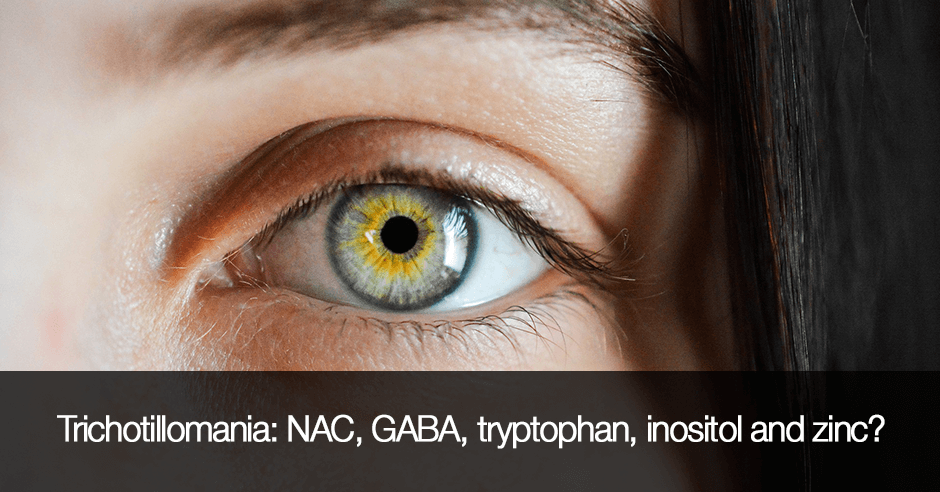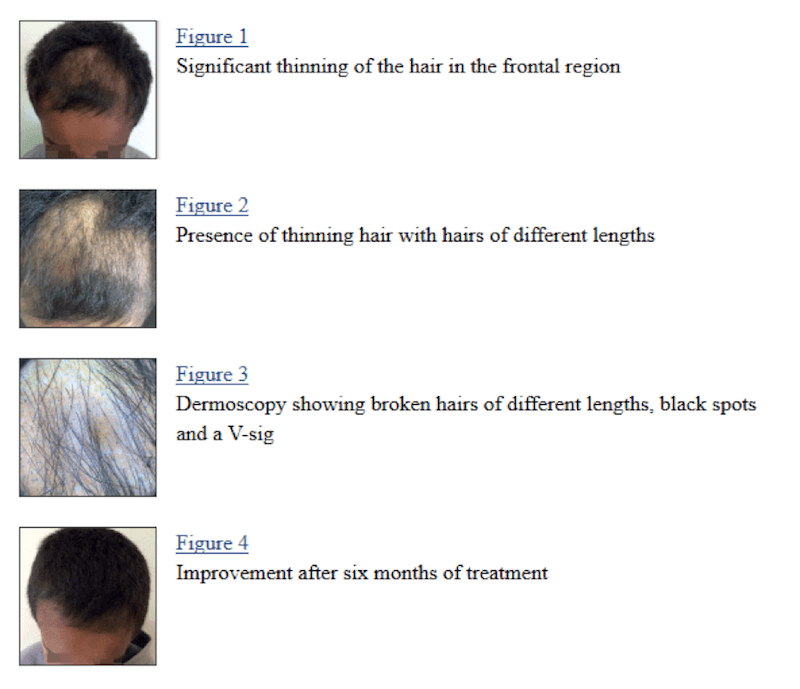
This recent paper reports on a case study with NAC – Trichotillomania: a good response to treatment with N-acetylcysteine
Trichotillomania is considered a behavioral disorder and is characterized by the recurring habit of pulling one’s hair, resulting in secondary alopecia. It affects 1% of the adult population, and 2 to 4.4% of psychiatric patients meet the diagnostic criteria. It can occur at any age and is more prevalent in adolescents and females. Its occurrence in childhood is not uncommon and tends to have a more favorable clinical course.
The scalp, eyebrows and eyelashes are the most commonly affected sites. Glutamate modulating agents, such as N-acetylcysteine, have been shown to be a promising treatment. N-acetylcysteine acts by reducing oxidative stress and normalizing glutaminergic transmission. In this paper, we report a case of trichotillomania with an excellent response to N-acetylcysteine.
In this case report an 11 year-old male student had been pulling his hair out for 6 months. He had a relationship problem with this father and also suffered from asthma and dermatitis. He was started on NAC:
Treatment with N-acetylcysteine was initiated (1200 mg/day for three months). The patient’s outlook improved dramatically, but complete remission was not achieved. We chose to increase the dosage to 1800 mg/day, which resulted in almost complete regrowth.

In this paper from 2009, N-acetylcysteine, a glutamate modulator, in the treatment of trichotillomania: a double-blind, placebo-controlled study, it is reported that
- Fifty individuals with trichotillomania (45 women and 5 men) received 1200-2400 mg/day of N-acetylcysteine or placebo over a 12-week period.
- 56% percent of patients experienced “much or very much improved” hair-pulling symptoms with N-acetylcysteine use compared with 16% using the placebo, and the improvements were first noted after 9 weeks of supplementation.
- Those in the N-acetylcysteine group did not experience any adverse events.
As you can see, the results with NAC are excellent but it can take 9 weeks and more before results are seen. For this reason, I would always also assess for low serotonin and low GABA and do trials of tryptophan or 5-HTP for low serotonin and GABA for low GABA. With any compulsive and obsessive behaviors I always consider inositol too and we may add this once the ideal dose of tryptophan has been found.
What is my rationale for recommending GABA, tryptophan, 5-HTP and/or inositol?
- Since NAC works on reducing oxidative stress and normalizing glutaminergic transmission, GABA may help too and will certainly help to ease any physical anxiety that is being experienced
- “Recommended first-line therapy for this psychiatric condition is administration of SSRIs” even though their efficacy is not yet proven in children – for this reason I’d recommend tryptophan or 5-HTP
- Also “according to the psychiatric definition, these patients pull their hair because the act is gratifying and reduces tension, anger, depression and anxiety” (these are all signs of low serotonin and another reason to consider tryptophan or 5-HTP)
- Because they offer relief right away, within 1-5 minutes
A complete nutritional and functional medicine work-up would be part of the plan too – to address the asthma and dermatitis (in the first paper above) and any other symptoms the person is experiencing and may be a contributing factor.
I’d expect the 56% of improved patients (in the second study above) to go to a much higher percent with all of the above approaches.
When I shared these papers on Facebook I was asked this question from someone who pulls out her eyelashes:
I pull my mascara off what is left of my eyelashes every night. I try my hardest not to do it but I find it impossible once I’ve touched my lashes. I’m about to start taking GABA and I was thinking about taking NAC. Would it be a bad idea to take both these amino acids?
This is my feedback: I always like to do one thing at a time and (as mentioned above) I would do the amino acid questionnaire and a trial of tryptophan and GABA first if the scores are high, and then look at adding NAC. If there are still some obsessive tendencies I would consider adding inositol. I am not aware of any issues with using all of these nutrients at once.
Someone else asked this:
Wouldn’t you deal with the psychological cause of it too – at the same time?
My response: Yes absolutely – if there is a psychological cause. But be aware that sometimes it’s purely nutritional or biochemical.
Another person shared that she only exhibits these behaviors when she’s stressed. Of course, the nutrients mentioned above, plus dietary changes, adrenal support, improving gut health and everything that I educate about, are important for reducing stress.
I also received some success stories. Here is one of them:
I’ve struggled with trichotillomania and dermatillomania (skin picking) for years and years. I underwent hypnosis that was extremely effective. When I added in zinc (after reading your book) the urge is almost completely gone. Thank you!
Keep in mind that zinc is a co-factor for making serotonin and GABA, is important for overall adrenal support and stress reduction, is needed for glutathione production and works as an antioxidant. I’d actually love to see these studies repeated with zinc alone.
And then I received this message from someone else:
I’m messaging you my answer about NAC because it’s slightly embarrassing I’ve always had terrible acne and always have picked at it obsessively and could not stop until I was given some supplements for PCOS which happened to contain NAC. To my surprise I lost the compulsion to pick at my skin, something I had never thought possible!
How wonderful for both of them! I always appreciate feedback like this and have to say nothing is too embarrassing to share (especially if it helps someone else).
Have you used NAC with success – with trichotillomania or dermatillomania (skin-picking) or even nail-biting? Or some other compulsive behavior?
What about GABA or inositol or tryptophan or zinc (or something else) for the same purpose and/or for additional emotional and stress-reducing support?